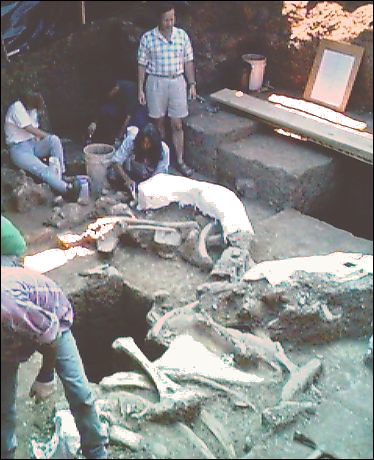

Every once in a while, someone invents a new field of scientific endeavor, and of course this requires a name for it. One such field, relatively new, is taphonomy. This essentially is the study of what happens to the remains of organisms between the time that an animal dies and its remains are recovered. In practice, we're working backwards from our knowledge of what can happen in order to determine what actually did happen. This is vital for interpretation.
Two of the caves in the Carlsbad, New Mexico, region whose fossils have
been intensely studied differ greatly in the kinds of animals recovered. Before anyone
could determine how much of this was due to differences in the animal life of the
region, the way the fossil remains were deposited needed to be known. In one, the
evidence indicates a pitfall trap, where animals falling in were unable to escape. In
the other, owls and carnivorous mammals carried in animals from a radius extending
several miles from the cave entrance. No believable interpretation was possible without
this recognition.

Contributor: Arthur H. Harris, Laboratory for Environmental Biology, Centennial Museum, University of Texas at El Paso.
Desert Diary is a joint production of the Centennial Museum and KTEP National Public Radio at the University of Texas at El Paso.

Excavation of a mammoth near Nogal, New Mexico. Positions of the bones have been recorded as part of the taphonomic data. White patches are bones that have been jacketed in plaster for removal from the pit and patches of sunlight striking into the otherwise deeply shadowed pit. Photograph by A. H. Harris.
Behrensmeyer, A. K., and A. P. Hill (eds.). 1980. Fossils in the making: Vertebrate taphonomy and paleoecology. University of Chicago Press, Chicago.
Grayson, D. K. 1984. Quantitative zooarchaeology. Academic Press,
Orlando. ![]()